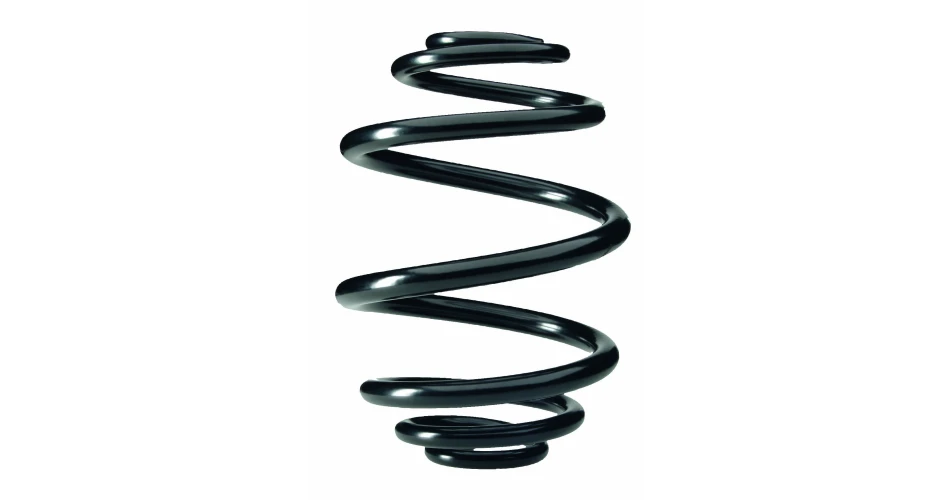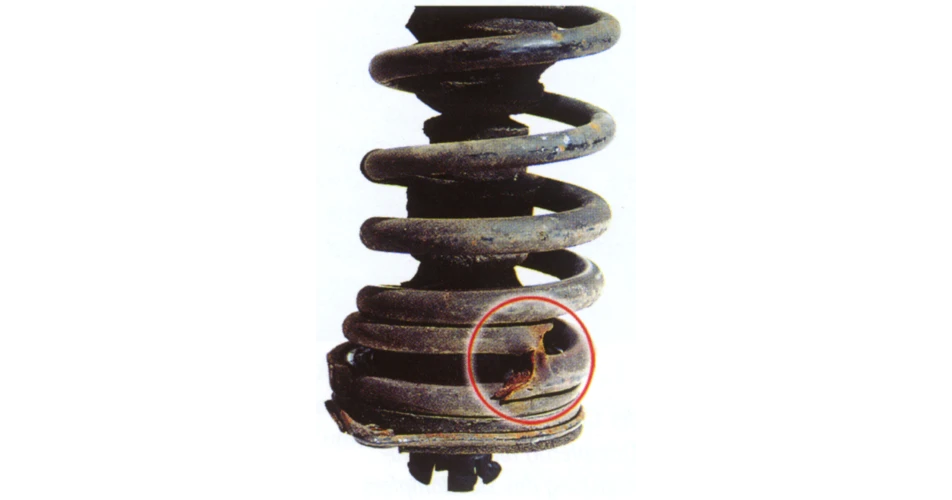Over the summer months many cars often undertake much longer than normal journey’s and carry much heavier loads with more passengers and luggage. This can put tremendous pressure on suspension coil springs and is one of many causes of a possible fracture. This is one reason why component manufacturer GKN recommends a post summer spring check.
There are many potential causes of damaged springs. Surface damage can be brought about by rust, the use of weight-reduced springs made of high-strength steels, which may impair toughness over time, and there is also the ever-worsening condition of many roads.
GKN say in the in the past, this only ever affected older cars, but nowadays, a broken suspension can be common on relatively new cars. The first warning signal is rust. This usually occurs at the lower end of the spring, where road dirt, stones and spray attack. Constantly in motion, this accumulation of grime and moisture on the spring plate acts like sandpaper against the spring’s protective coating. At some point, a rusty spring put under even more stress by a heavy load may be unable to hold the tension and break.
Strange noises may also be an indication that a break is about to happen. In a suspension strut assembly, the spring often no longer sits correctly on the shock absorber and can cause squeaking and creaking sounds.
Springs are critical safety components, so it is essential to look at the quality of the spare part being used as a replacement. Spidan suspension coil springs are made of heavily-loaded steels, additionally coated with rust protection that can withstand even the toughest environmental influences. Where necessary, plastic sleeves are pulled onto the spring ends that rest on the spring plates.
Miniblock springs, sometimes called barrel springs because of their shape have quality criteria that is immediately visible to experts, with spring wires that taper in the direction of the spring ends. Without this inconstant wire, the desired progression is not possible and vehicles buckle outright when loaded.
Steffen Junge, Team Leader Product Management at GKN Driveline comments, "Unfortunately, dangerous constructions such as these are constantly found on the market. Dramatic deterioration in driving behaviour is not the only consequence, the coils can even touch during deflection and be damaged. Vehicles with such springs potentially pose a safety risk. Spidan springs therefore always meet the requirements of the OE design.”
 Spidan miniblock suspension coil springs are made of heavily-loaded steels, additionally coated with rust protection that can withstand even the toughest environmental influences.
Spidan miniblock suspension coil springs are made of heavily-loaded steels, additionally coated with rust protection that can withstand even the toughest environmental influences.
 Rust is often the first warning sign of a possible spring break. This usually occurs at the lower end of the spring, where road dirt, stones and spray water “attack” most.
Rust is often the first warning sign of a possible spring break. This usually occurs at the lower end of the spring, where road dirt, stones and spray water “attack” most.